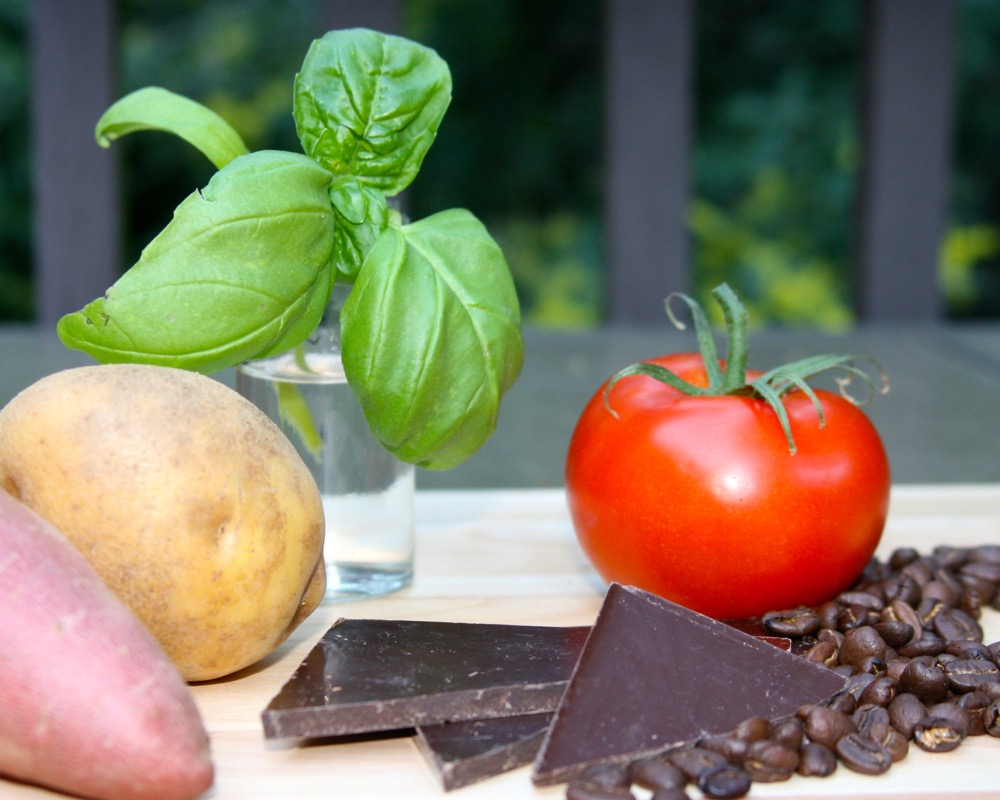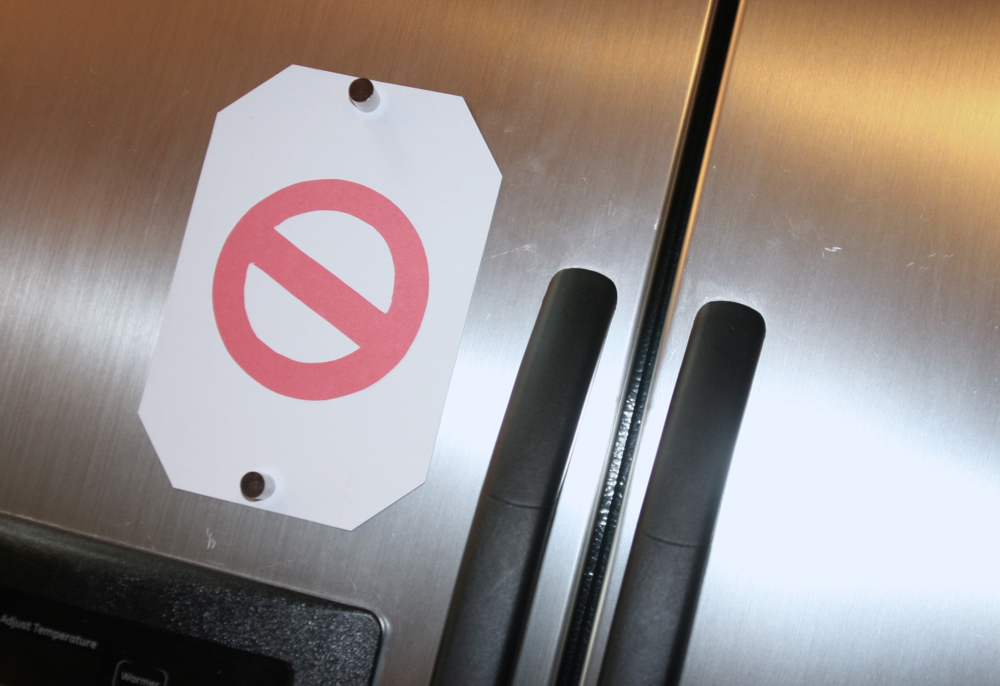Storing chocolate in the refrigerator can lead to a “sugar bloom,” a phenomenon that occurs when the chocolate is removed from the fridge and exposed to the warmer air, causing condensation to form on the chocolate’s surface and dissolving some of the sugar. As the chocolate dries out the sugar recrystallizes and is drawn to the surface, forming a grainy coating and ruining the silky texture of your bar.
“The overall aesthetic of chocolate is one of taste and texture combined," Siegel explains. “If you destroy the texture by separating the sugar from the mass, it destroys that melt-in-your mouth sensation, which is a big part of what makes chocolate taste so good.” Chocolate also absorbs odors easily, so there’s a good chance it will reek of other things in your fridge, like last night’s leftovers.
That doesn’t mean chocolate is safe on the counter top. Besides the danger of your housemates snagging it (including the dog, for whom chocolate is a toxin), oxygen and light cause the chocolate to oxidize, which degrades the flavor. Ideally, solid chocolate should be sealed in an airtight bag, tucked into a dry, dark corner of your kitchen, and kept at a constant room temperature. Although dark chocolate will keep for a year this way and milk chocolate about six months, fresher always tastes better. So be strategic and buy only enough to cover a few weeks worth of chocolate bliss, whether it’s an occasional indulgence or a daily necessity.
Coffee
Even if you’re not a fan of Starbucks, it’s a safe bet to assume that they’ve got some top-notch aficionados advising them about how to store coffee. One of their experts, Major Cohen, was recently quoted as saying that refrigeration and freezing are “not the friend, but rather the enemy of good coffee.” The real culprit is moisture, which condenses on the grounds or beans when they are removed from the fridge, damaging the coffee’s flavor.
Coffee should be stored in an airtight container at room temperature, where your essential elixir will be safe from another foe: oxygen. Exposure to oxygen will diminish freshness and flavor, especially when it’s already been ground and there’s more surface area exposed to the air. For the tastiest cup of joe, buy just enough coffee for the week and grind it just before brewing.
Tomatoes
Unless you like your tomatoes tasteless and mealy, keep them away from the fridge. Like me, tomatoes do not fare well in the cold. Cold air stops the tomato from continuing to ripen and becoming flavorful. The low temps also breakdown the membranes, causing the cells to leak and your tomato to lose flavor and turn to mush.
Postharvest specialist Marita Cantwell, recommends keeping these fragile fruits on the counter top away from direct sunlight, at room temperature (65 -70°F).
Basil
While many fresh herbs fare just fine in the fridge, basil does not. These low temps actually injure the basil, causing it to turn black or gray. The leaves may also wilt and become spotty from decay, deterring your dinner guests from trying your tomato-mozzarella appetizer.
To keep your bunch of basil looking and smelling lively, keep it at room temp and treat it like you would cut flowers: stick it in a glass of water so those large leaves can drink at will. Better yet, buy a basil plant.
Potatoes (regular and sweet)
Storing regular potatoes in your fridge for more than a couple of weeks will cause the sugar content to rise, changing the flavor and nutritional balance. The increased sugar levels will also cause the potatoes to discolor when you cook them.
But keeping your spuds out of the fridge can lead to other problems. If you just pile them on your counter where they are exposed to light at warmer temperatures, it can raise the level of the glycoalkaloids – a naturally occurring compound that can make your potatoes taste bitter and even become toxic if consumed in high doses.
The solution? According to Cantwell, the way to keep your potatoes in top form is to keep them in a paper bag in a dark cool corner of a cabinet.
Unlike regular potatoes, sweet potatoes won’t tolerate refrigeration for even short amounts of time. When they are cooked after being refrigerated or even stored below 59°F, they will taste “off” and develop a hard core. Fortunately, sweet potatoes don’t form toxic glycoalkaloids, so they can stay right on your countertop until you are ready to eat them. Just remember not to wait too long.

